Ducks have been kept as poultry for ages, and that’s a practice that continues today. In fact, many homesteaders are coming around on the advantages of ducks compared to chickens.
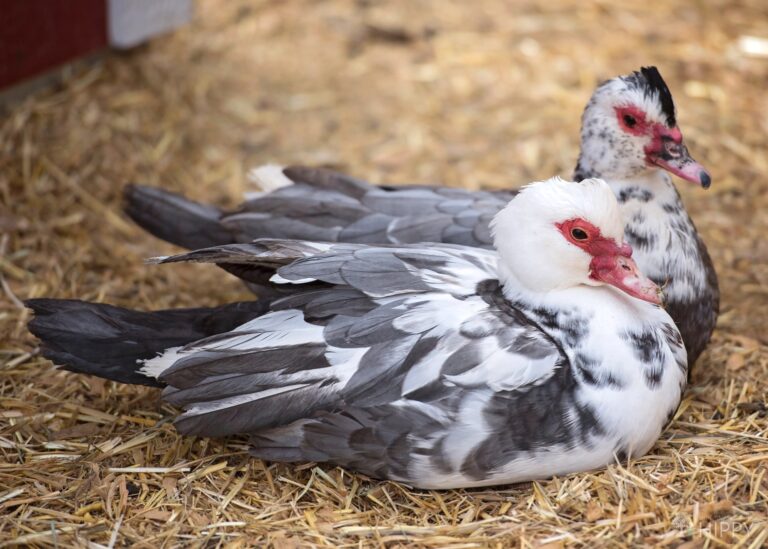
Ducks are a little bigger, yes, but they also tend to be far healthier, more self-sufficient, and easier to care for overall, while still providing you with plenty of eggs and, of course, delicious meat when required.
And like chickens, there are many different breeds out there, each with their own advantages and disadvantages.
Today we will be taking a look at the Muscovy duck, one of the largest and also the most popular domestic breeds around. These big, bold, but gentle ducks might be the perfect ones for your very own flock.
What are Muscovy Ducks Kept For?
Muscovy ducks are technically a dual-use breed, originally raised both for eggs and meat. Today, though, they are far more popular as strictly egg producers or as pets or ornamental ducks. They are friendly, have a striking look, and are easy to take care of even for first-time owners.
As mentioned above, they are big-bodied and can produce a lot of meat or make for a wonderful table bird, but note that their meat is very dark, and has a flavor closer to red meat than white.
It’s delicious, or rather I think it is, and a lot of folks agree with me, but it might not be the preference for everyone – especially if you want a more traditional duck dining experience.
But, whatever reason you want Muscovies for, they are a dependably good choice if you don’t mind a larger breed.
Breed Highlights
Muscovies are often erroneously said to hail from somewhere in Russia because, supposedly, that is how they got their name. Muscovy, Moscow, you can see where this is going.
But in actuality, it is thought that Muscovies originated in North America. Or at least, in their modern domestic form.
The wild ancestors of the Muscovy were known to have existed in Peru, along various places of the Pacific Rim, and across much of Central and parts of North America prior to this point.
There’s still considerable arguing over the precise origin of the ducks in the wild, and also what nation first tamed or codified the domestic Muscovy we know today. Interesting trivia to be sure, but nothing you need to worry about for your purposes…
Concerning the ducks themselves, Muscovies are large, dense, and broad ducks, and they have bodies that are basically a tapering pill shape.
Their necks are relatively short, and they carry their round heads almost completely upright. Their eyes are a dun yellow or brown color, and their bill is either pink, black, or yellow.
Males and females alike have slightly erect crests of feathers that curl from the forehead prominence just above the bill to the back of the head, but they’re much more noticeable in the drakes than the hens.
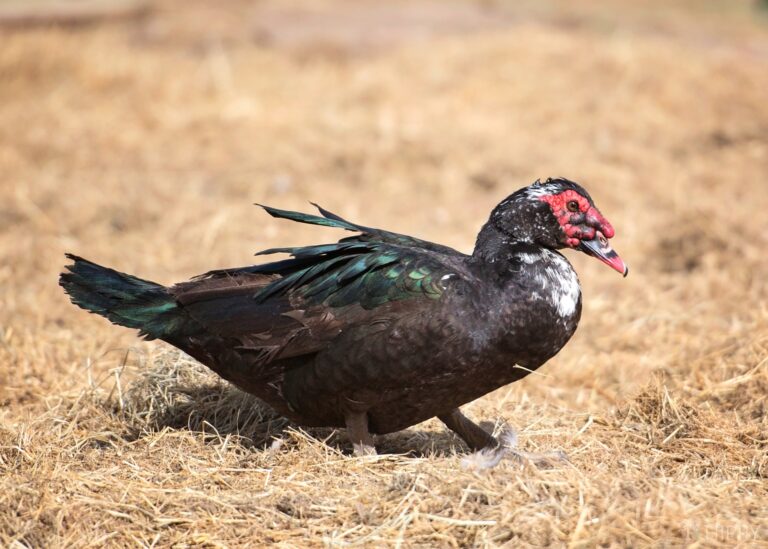
Muscovies are instantly recognizable by the bright red caruncles, or fleshy growths, surrounding the face and the upper part of the bill. It makes them look a little bit like turkeys! These growths grow in quicker, are brighter, and larger on the males compared to the females.
Moving down the back to the wings, we see that the feathers of the Muscovy are alternately a flat finish or iridescent, and the wingspan averages right at 5 feet or a little less, though larger birds might have a few more inches to spare.
As a rule, drakes are flightless because they’re typically too heavy, but hens can fly, especially if they are on the smaller end of the spectrum, Consider wing-clipping mandatory if you don’t want them making trips! The tail feathers are long, wide, flat, and carried straight back.
Like all ducks, Muscovies have webbed feet and notably long claws which is another way to help identify them quickly: these long claws are sometimes used as defensive weapons, but more often to grip branches and tree trunks.
Because of their propensity to climb or fly up into trees, Muscovies are often referred to as wood ducks!
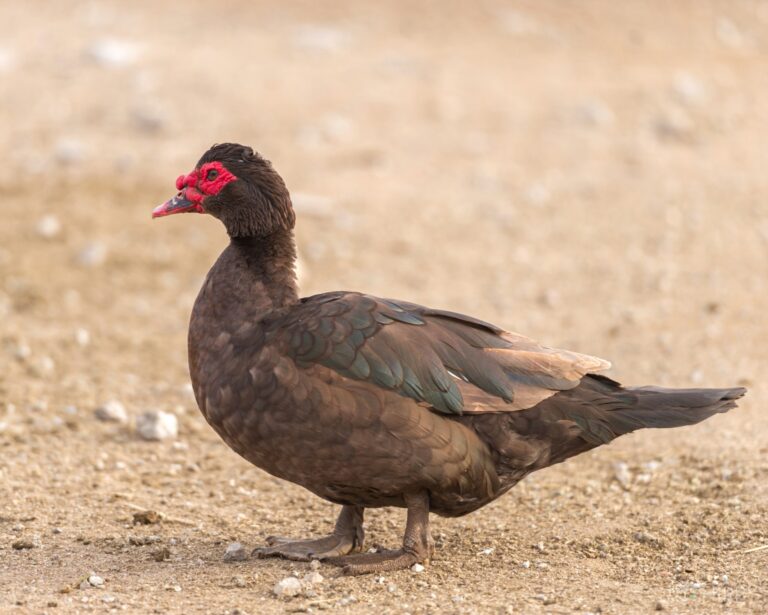
What Colors and Patterns are Muscovies?
Muscovy ducks come in many different colors, among them white, black, blue, chocolate, green, lavender, and bronze. Various patterns include pied, which consists of white with any other of the aforementioned colors, along with rippled and barred.
Drakes, as a rule, show considerably more iridescence compared to the ladies, the latter of which, as with most duck breeds, tend to be dull, flat, and less ostentatious to help them stay concealed.
Size and Weight
Muscovies are big, big ducks, and among the biggest if not the very biggest domestic breeds that are commonly kept.
Drakes average around 13 pounds (5.8 kilos), though individuals that weigh 15 pounds (6.8 kilos) or slightly more aren’t uncommon by any stretch. Hens, per usual, are significantly lighter, weighing on average about 7 pounds (3.1 kilos) but potentially tipping the scales at about 8 ½ pounds (3.8 kilos).
And as mentioned, you should count on females being able to fly once they are physically mature and fully feathered, particularly if they are on the lighter end of that scale.
If you want to keep them grounded, you’ll have to clip their wings. The males are too big to take flight as a rule, though they might be able to make some flapping long jumps.
Are Muscovies Friendly?
Yes, they tend to be. If I were going to describe Muscovies with one or two words it would be “calm” and “stoic”.
Your ducks will certainly recognize you and like you, especially if you have raised them from ducklings, but they aren’t “snuggle bugs” and do not like to be picked up, petted, and held close as a rule. If you want a lot of physical interaction with your ducks, they might not be the best choice.
That said, you can usually depend on them to be easy-going, easy to care for, and reasonably easy to handle when the situation dictates.
Muscovies tend to wag their tails repeatedly when they are happy or excited to see you, and so will definitely give you signs that they are feeling approachable or friendly.
But as always, females that get broody or have ducklings can get twitchy and overprotective, and drakes that are feeling amorous or territorial about a female or young can be aggressive.
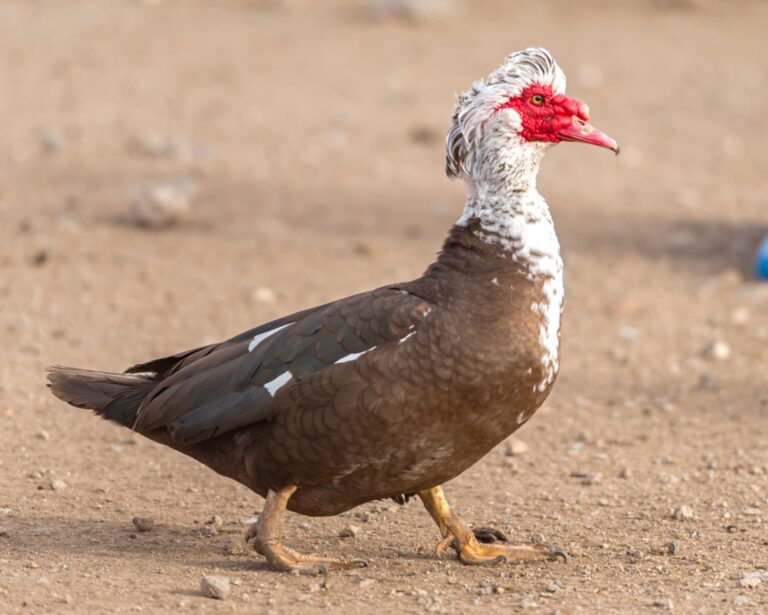
Are Drakes Aggressive?
Typically not, but if drakes are kept in a flock together without enough females, they will start to fight each other for dominance – and these fights can get very ugly.
Drakes are also protective of mates (even though Muscovies tend toward polygamy), especially when a female becomes broody or has ducklings, and they’ll become territorial to defend a nesting site.
But outside of these circumstances, you can usually expect Muscovy drakes to act like gentlemen- at least by the standards of ducks!
That said, if they do become aggressive or want to keep you at a distance you would do well to keep in mind the large claws on their feet; they can and absolutely will employ them as weapons!
In conjunction with the size and strength of these ducks, they can give you a nasty slash, so protect yourself and consider wearing heavy leather gloves with gauntlets if you’ve got to restrain an ornery drake.
What’s the Ideal Drake-to-Hen Ratio for Breeding Muscovies?
At the bare minimum, you want 3 hens for each drake, but a much better ratio is five or even six per drake, particularly in a larger flock.
This is important to prevent serious competition for mating rights between drakes and also to prevent overbreeding of hens.
Considering the size of Muscovies generally and the size disparity between males and females, combined with the long claws over-mating can severely rough up a poor hen.
How Much Room Do Muscovies Need?
Muscovy ducks need quite a bit of room compared to other breeds in accordance with their large size. Ideally, if you have a small hobby flock, they need a lot more room than a typical backyard!
Even if you have just 5 or 6 ducks, try to provide them with at least a quarter of an acre to roam and range on so they can get plenty of exercise, foraging opportunities, and space to themselves when and if the time comes.
You should increase the amount of space they have available by that same standard as your flock grows, adding another quarter acre for every five or six extra ducks you’ll be adding to the flock.
Diet
Muscovy ducks eat a diet that is largely consistent with that of other domestic duck breeds.
Waterfowl feeder pellets consisting of about 20% protein are adequate for most of their nutritional needs, but ducklings have significantly greater protein requirements and will need a 28% protein starter feed that is suitable for waterfowl or game birds.
Other than that, most of these are always happy to eat various kinds of plants, including roots and leaves, shoots, buds, blooms, and more along with many kinds of animal protein like slugs and snails, reptiles and amphibians, all kinds of insects, crustaceans, small fish and, most notably, many kinds of flies.
Muscovies can absolutely devastate insect populations in any area where they are kept, and particularly many sorts of pests like mosquitoes and harmful flies that will infest produce and other animals.
Large Muscovy flocks have even been introduced as biological depopulation efforts toward pests, and have proven to be more effective than chemical controls and traps over time!
Pretty remarkable, and this is likely a consequence of their typical wild habitat, often being found in forests and other areas of dense vegetation near water features and wetlands.
But be warned: Muscovies are big ducks, especially the males, and that means they need correspondingly higher amounts of calories and other nutrients in order to sustain their metabolism, keep healthy, and thrive.
You’ll definitely be spending more on feed and treats, and if you have a modestly-sized flock, even the most bountiful property can quickly be depopulated of edible plants, insects, and other critters thanks to the “attention” of your Muscovies.
Make sure you plan and budget accordingly to keep them well-fed…
Are Muscovies Noisy or Quiet?
Quiet. Actually, very quiet! Muscovies are among the very quietest duck breeds, and they don’t even really quack like most other ducks do.
Aside from being quiet and inconspicuous generally, males typically only make a low, muted call or puffing and hissing sounds, often when they are excited, anxious, or upset.
Females produce a similarly soft, warbling call, but only when there is reason to do so. If things are going well and the situation is calm, they tend not to make much noise among themselves.
This definitely recommends the Muscovy to keepers who have neighbors that might be annoyed by noisier ducks, or if they themselves don’t want to put up with a lot of clamor near the house.
Are These Ducks Productive Layers?
Pretty good, though not exceptional. They can definitely keep even a large family in eggs if managed properly and you have a couple of good hens.
On average, you can expect your Muscovy hens to produce anywhere from 120 to 200 very large eggs yearly. That’s not a lot compared to many other domestic breeds, but the large size of the eggs offsets the low production somewhat.
At What Age Do Muscovies Start Laying?
Muscovy hens reach sexual maturity and start laying eggs at about 7 months of age, sometimes slightly earlier.
The mating season lasts from late summer to mid-spring, and if you allow a female to attempt to hatch her eggs, she can produce anywhere from three to four clutches of viable eggs, numbering on average about 12.
Some exceptional hens will lay 16 or even more in a clutch. As always, collecting the eggs will keep them coming.
What Color are Muscovy Eggs?
Muscovy eggs are a pure- or off-white color.
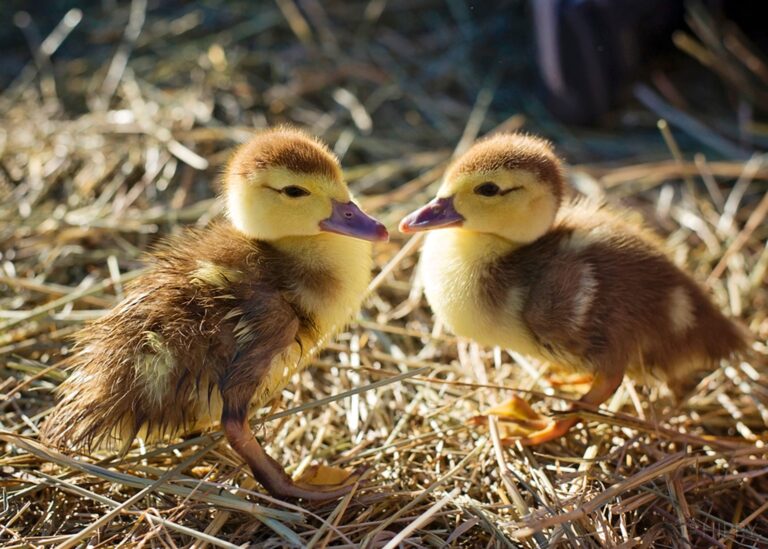
How Long Do Muscovy Ducklings Stay with Their Mom?
Muscovy ducklings usually hang out with mom, sticking very close to her, for at least 2 ½ months, and often closer to 3 months.
After that point, they’ll be ready to leave her side and more or less join the rest of the flock or head out on their own, though they will not yet be physically mature, not completely; Muscovies tend to grow and mature significantly slower than other domestic breeds.
Overall Health
Muscovy ducks are remarkably healthy for the most part.
Although they’re at their best in hot, humid conditions, actually being a type of tropical or subtropical species, they do just fine in cold weather owing to their excellent insulation, high metabolism, and large size as long as they are given time to acclimate to it.
One consideration you’ve got to watch out for is a drawback of their size, particularly as it affects drakes: because they don’t fly well, anytime they have to drop or fall from an elevated spot, the stage is set for injury.
For this reason, perches, ramps, and so forth must be safe, secure, and offer good traction, and at no point should they be forced to leap down from a higher place.
Disease Susceptibility
Muscovies aren’t particularly vulnerable to any particular kind of disease or parasite, though a quirk of their feathers makes them slightly more prone to fleas, mite, and lice infestation in colder areas.
Muscovies don’t really have a great preen gland compared to other domestic ducks, and they don’t put out as much preen oil for grooming. Notably, the production of this oil seems to slow considerably in cold weather.
Veteran owners will have noticed that, in hot regions, Muscovies feathers tend to be slicker and shinier, and lay much closer and tighter to the body compared to the same birds if kept in cold regions.
This loosening of the feathers makes them slightly more vulnerable to these parasites in cold conditions, though this is easily managed by the usual prevention and sanitation measures.
Do Muscovies Have Many Predators?
Muscovies have the same predators that most domestic ducks have, though their larger size does give them a degree of protection against smaller ones.
Major threats include coyotes, wolves, foxes, domestic dogs (feral or just running loose), bobcats, cougars and, in the case of ducklings, domestic cats. Badgers might be a problem in some areas, and eggs are always vulnerable to snakes.
Larger birds of prey, particularly eagles and the bigger hawk species along with owls are also significant predators of ducks and must be respected.
Life Expectancy of Muscovy Ducks
Domestic Muscovies are surprisingly long-lived, and when given good care and protected from predators you should expect them to live anywhere from 16 to 20 years.
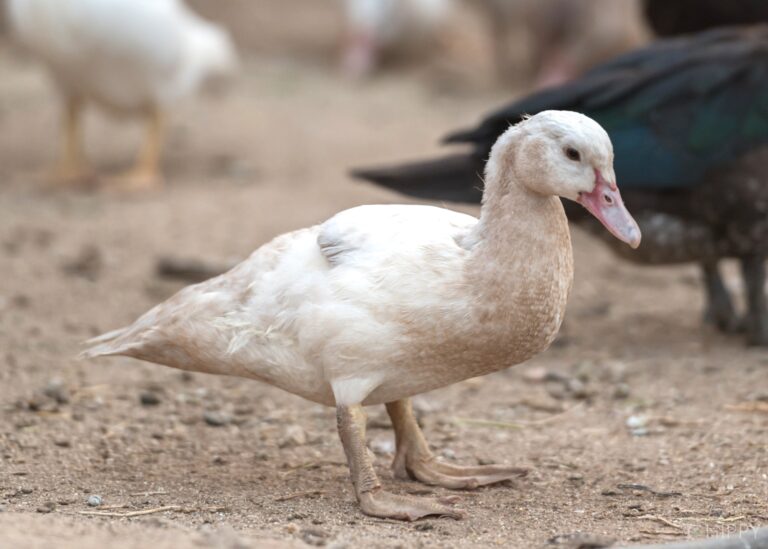
Is the Muscovy the Right Duck for Your Homestead?
If you have a little bit of extra room to spare and greatly enjoy peace and quiet, the Muscovy is a wonderful choice even if you just want a hobby flock or a few eggs now and then. They’re also a good choice for first-time keepers because they tend to be calm, friendly, and easy to handle when the situation demands it.
They’re also healthy, long-lived, and adaptable to many different environments, meaning that wherever you live and whatever your situation, Muscovies will probably fit into your life just fine.
However, if you are very space-limited, want to handle and pet your ducks regularly, or have a limited budget for food they are not a great choice. Likewise, if truly high-volume egg production is what you are after they will probably let you down.
Concerning meat, they’ll give you plenty of it, but if you’re used to the “typical” flavor of duck you’ll find Muscovy meat distinctly different in taste and texture. Whether or not this appeals to you, or your customers, is a completely personal preference!
All in all, though, the Muscovy is an excellent choice for hobbyists, people who want eggs, or owners who just want to enjoy the quiet!
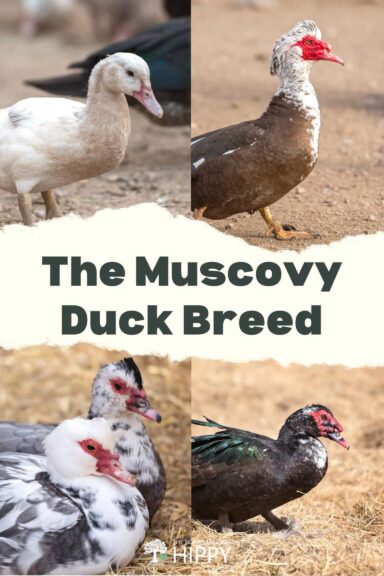
Tim is a farm boy with vast experience on homesteads, and with survival and prepping. He lives a self-reliant lifestyle along with his aging mother in a quiet and very conservative little town in Ohio. He teaches folks about security, prepping and self-sufficiency not just through his witty writing, but also in person.
Find out more about Tim and the rest of the crew here.
